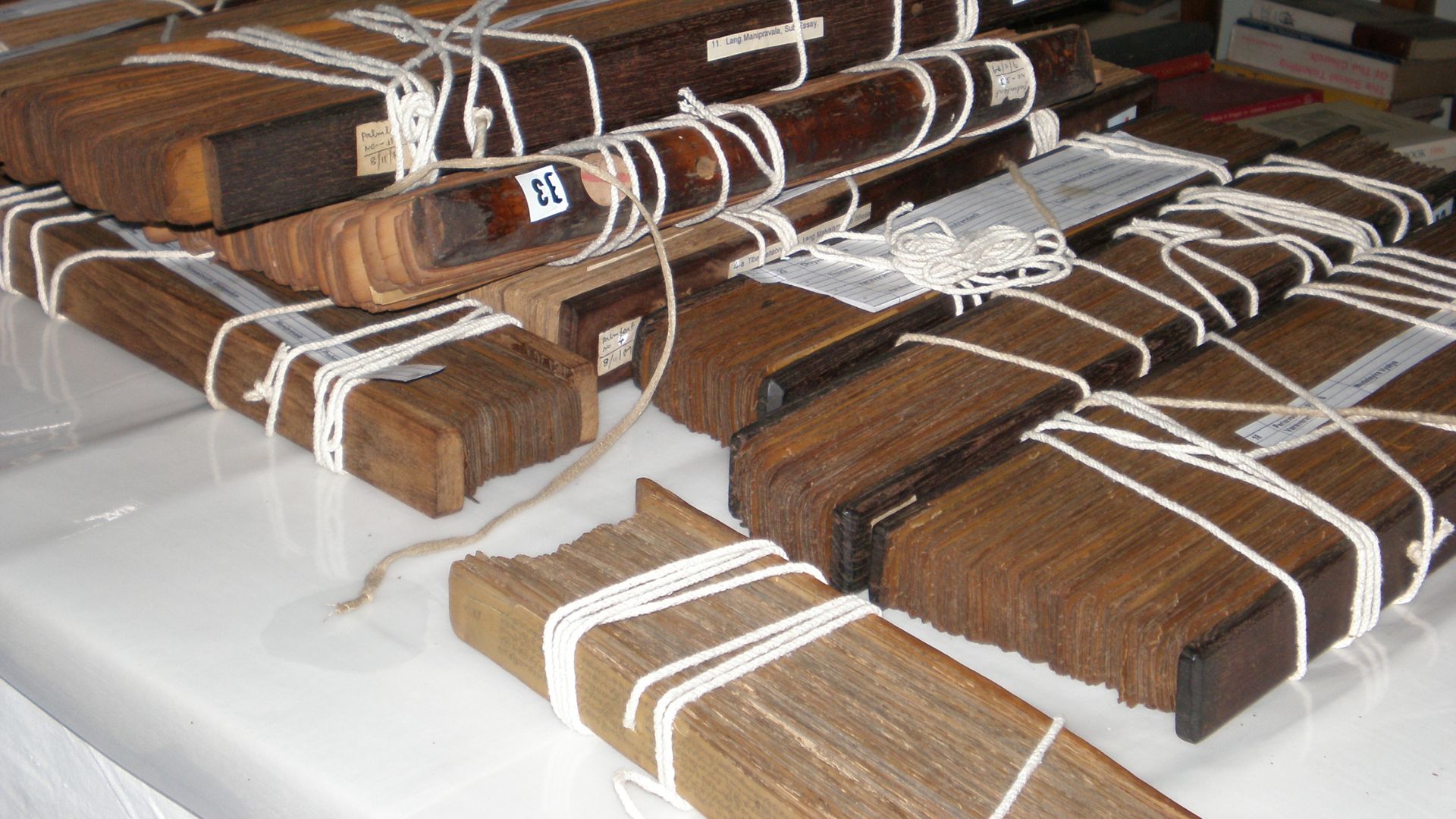The U.S. Ambassadors Fund for Cultural Preservation is helping to preserve thousands of relics of India’s past in the United Theological College’s archives.
May 2017

The collection of palm leaf manuscripts at the United Theological College library in Bengaluru. (Courtesy United Theological College)
In the basement of the United Theological College in Bengaluru lies a rich archive of more than 5,000 palm leaf manuscripts—a recorded history of India’s cultural heritage of the 18th and 19th centuries. And, thanks to the college’s efforts, you needn’t venture into the depths of its library, which is one of the biggest theological libraries in Asia, to view them. They are all available, or are in the process of becoming available, in digitized form for universal access.
The rare collection
The palm leaf manuscripts include writings dating back more than 200 years, covering folk literature, native medicinal formulae, religion, astrology, astronomy, cultural practices, veterinary medicine, agricultural sciences, and crafts and skills.
“These manuscripts are important material for historical research and a treasure trove of ethnographic and historical information,” says Samuel Raj, the United Theological College librarian working on the digitization of the manuscripts. Written in several Indian languages, the manuscripts take on various formats and styles. One that stands out for Raj is “in Sinhala language with images carved in the form of a comic story.”
The manuscripts preserved in the archive include accounts of India’s history written by missionaries, not as monographs but as journals. These give historians an additional perspective on the incidents they seek to study.
Raj is also working on digitizing the college’s assortment of rare books. So far, he says, he has “identified more than 60 rare books, which are not available anywhere online.” After scrutinizing these rare books and determining they don’t have online duplicates, Raj converts them into PDF format and makes them universally available.
Partial funding for the preservation work came from a 2006 grant of $35,000 (Rs. 23 lakhs approximately) from the U.S. Ambassadors Fund for Cultural Preservation. The fund was awarded for the preservation and microfilming of the palm leaf manuscripts and rare books in the United Theological College’s archives.
The digitization of the palm leaf manuscripts and the rare book archive makes the college’s impressive collection available to not only students, but also to “researchers from other secular colleges from many parts of the country and abroad,” says Raj.
The team working on the project has seen to it that the library keeps the historic documents wrapped up carefully in its air-conditioned basement at all times. The library fumigates each manuscript to kill insects and termites before it’s archived, says Raj. The college uses “wax paper and wooden boxes for manuscripts,” treating the palm leaves “periodically with neem and citronella oil” and tying them up “using red cloth in the traditional way,” he adds.
The library
While the United Theological College was founded in 1910, its library began to take shape as a “standard library” in 1968, when its collection started growing in earnest from “generous contributions of the missionary societies and individual well-wishers,” says Raj. More than 95,000 books, 272 periodical titles, 420 microfilms of historical record and 23,023 microfiches comprise the library’s collection today.
The library boasts of historical relics, both religious and secular, like Martin Luther’s “Commentary on Galatians” (1523); Bartholomäus Ziegenbalg’s “Grammatica Damulica” (1716); Mohandas K. Gandhi’s letters; the first Tamil New Testament printed in India; writings of 18th-century Tamil poet-singer Vedanayagam Sastriar; and countless literature, history, anthropology, sociology and science texts.
With such treasured works on hand, the library, which started moving to its current facility in 1992, “preserves the original records and periodicals” and is an “invaluable source of information about the life and conditions during the last two centuries,” says Raj.
As he explains, having palm leaf manuscripts, rare books and other resources digitized ensures the posterity of the originals, increases their availability to scholars and helps to keep India’s past alive.
Carrie Loewenthal Massey is a New York City-based freelance writer.
hi,
please let us know how we can access these leaves online ?
Milind Shendurnikar
hi, please let us know how we can access these leaves online ?